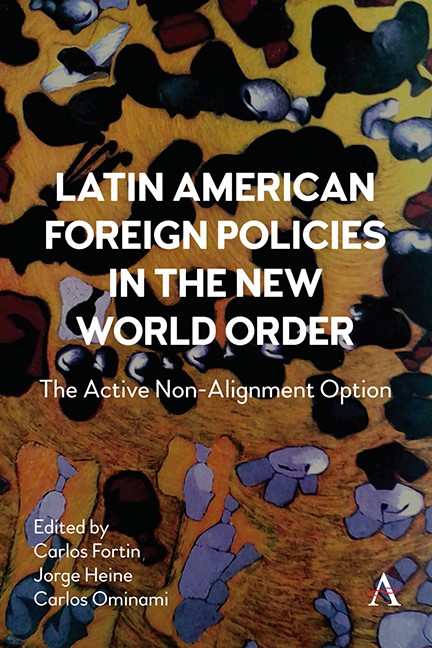Book contents
- Frontmatter
- Dedication
- Contents
- List of Tables and Figures
- Foreword
- Introduction: Active Non-Alignment (ANA) A Doctrine
- Part One The Emerging World Order
- Part Two Active Non-Alignment In The New Geopolitical Environment
- Part Three Active Non-Alignment in the New International Political Economy
- Part Four National Perspectives
- Conclusions—Implications of an Active Non-Alignment (ANA)
- Notes on Contributors
- Index
Chapter Six - The United States-China Dispute and Latin American Security
Published online by Cambridge University Press: 15 November 2023
- Frontmatter
- Dedication
- Contents
- List of Tables and Figures
- Foreword
- Introduction: Active Non-Alignment (ANA) A Doctrine
- Part One The Emerging World Order
- Part Two Active Non-Alignment In The New Geopolitical Environment
- Part Three Active Non-Alignment in the New International Political Economy
- Part Four National Perspectives
- Conclusions—Implications of an Active Non-Alignment (ANA)
- Notes on Contributors
- Index
Summary
This chapter examines how Latin American regional security actors are engaging with the competition between the United States and China. We look at two factors that raise challenges to the emergence of an active regional response to the systemic dispute. On the one hand, a network of institutions has evolved in the realm of defense diplomacy, led by Washington, which claims a hegemonic role in the sphere of security; on the other, there has been a decline of regional projects in general. We argue that the search for autonomy in the sphere of security in regional terms, a traditional discussion among Latin American scholars and political leaders, must confront these major challenges if the Active Non-Alignment approach (ANA) is to move forward. As relations between China and the United States will continue to impact international politics in the next decades, it is essential that regional actors embark on the admittedly difficult path of debate and negotiation leading to collectively deciding on a road that could enhance their autonomy.
We start by exploring the security dimension of the competition between China and the United States in Latin America. We then move to consider the history and features of the institutional network through which Washington’s influence in the region is being exercised. Finally, we look into the linkage between autonomy and regionalism, to the extent to which it has weakened in government postures and policies and to possible ways forward for its revival.
The Chinese–American Competition in Latin America
The past two decades have been marked by the growing Chinese presence in Latin America (Myers 2018). While Chinese economic and commercial interests are the key drivers of this trend, China has also invested in political and diplomatic relations. In the security sphere, we also see a move toward a greater presence.
China’s strategy includes advancing bilateral ties with Latin American and Caribbean (LAC) region countries, isolating Taiwan and increasing its presence in regional and multilateral organizations, in particular, the Organization of American States (OAS), where China was granted observer status in 2004 (OAS 2004), and the Inter-American Development Bank (IDB), which China formally joined in 2009 (IDB 2009).
- Type
- Chapter
- Information
- Latin American Foreign Policies in the New World OrderThe Active Non-Alignment Option, pp. 87 - 100Publisher: Anthem PressPrint publication year: 2023

